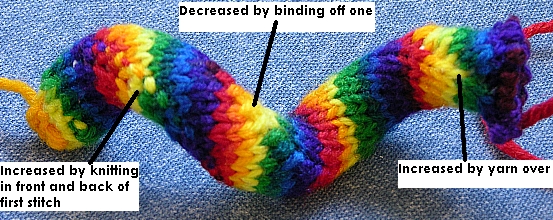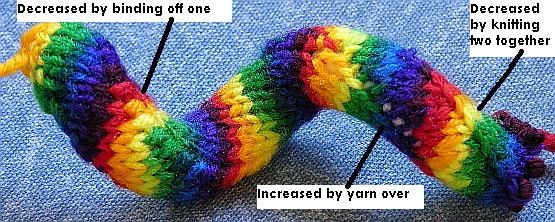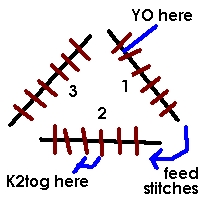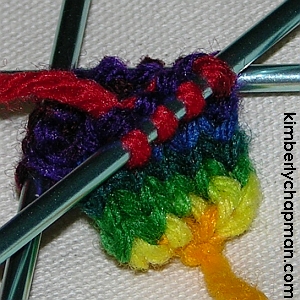 [d]
[d]
Start a basic tube. This can be done from the total stitches needed, or as shown here, starting from a point and adding stitches until you have your desired total (in this case twelve, or four per needle). I find that it's best to have a couple of normal rows knitted all the way around before starting a twist.
 [d]
[d]
At the start of a row, knit two stitches together to drop one. I find that it's easiest to insert the double-pointed needle backwards through the first two stitches and then down, rather than coming in from behind the second stitch in the row.
 [d]
[d]
As with normal knitting two together, pull the loop through and then leave the new stitch on the new needle.
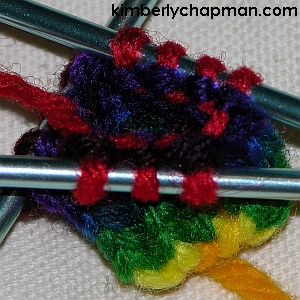 [d]
[d]
Finish knitting this section. You will be left with one stitch less than a normal count for this needle (in this case, three stitches).
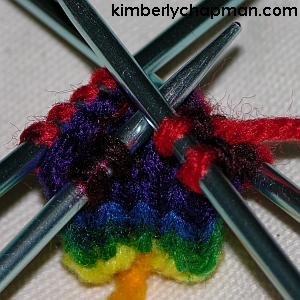 [d]
[d]
On the next needle (which should be your middle/second needle), knit halfway along. If you have an odd number, decide at the start whether you will be rounding up or down, but stay consistent to that through the whole piece. I generally round up, so if there were five stitches, I'd knit three.
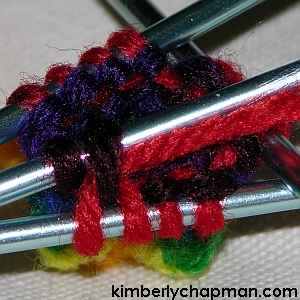 [d]
[d]
Put the yarn over the needle to add a stitch, as a normal yarn-over move. Then knit the next stitch.
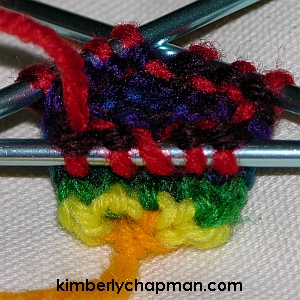 [d]
[d]
Complete the row along this needle with normal knitting. You can see the added stitch in the photo. This needle should now have one more than the usual count; in this case, a total of five stitches.
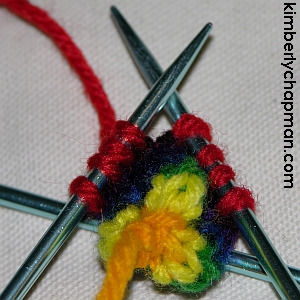 [d]
[d]
As you repeat this, the middle needle will always have extra stitches and the first needle will run out if you don't even them up. Simply slide the stitch on the end of the middle needle closest to the first needle over onto the first needle. Be sure to move it directly, not twisting it at all. In this photo from below, you can see that the first and second needles each have four stitches again now.
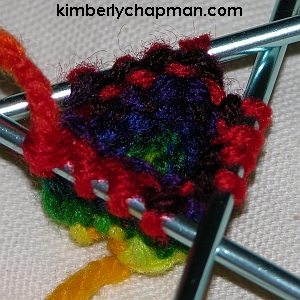 [d]
[d]
Knit along the third needle as normal to complete the entire row. The count on this needle will never change. That's what makes the twist happen: the fact that you're continually moving/feeding extra on the other needles and not touching this one.
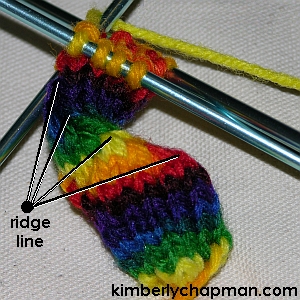 [d]
[d]
Simply continue to repeat the above steps over and over, and soon you'll see a twist emerge. Where you've been dropping stitches (knitting two together), you'll start to see a ridge line forming. Should you forget what point you're at when you've put the knitting down for awhile and then come back to it (if like me you don't bother with row markers), simply locate this obvious ridge. Wherever it joins a needle, that's where you want to knit two together again.
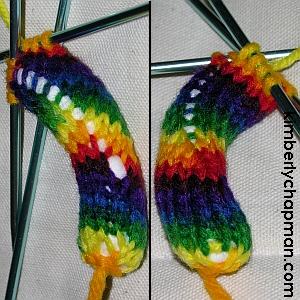 [d]
[d]
I strongly suggest stuffing the tube every few inches, because as it twists it gets harder to push stuffing down through it. Be sure to stuff as rigidly as you intend for the final piece, since it's almost impossible to cram stuffing down beyond a few inches.
Once you start stuffing the piece, you will see big holes where you've added stitches (left side of the photo), and smaller ones where you've been dropping stitches (right side of the photo along the aforementioned ridge line). Depending on the desired outcome, you could either leave the holes as they are, stitch them closed, or my favourite technique as shown below: weaving other yarn through them.
If you find that you haven't stuffed enough, you can use these holes to push in extra stuffing, but you have to work with small amounts and it can be rather fiddly.
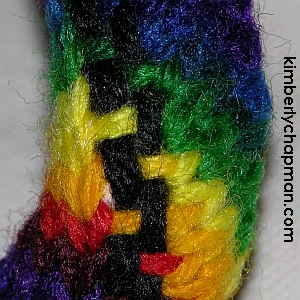 [d]
[d]
For the bigger holes, I recommend weaving multiple times through to cover up the stuffing. The yarn you use can be anything you want. In this case I chose black because it best complimented the rainbow, whereas using the rainbow yarn ended up with mismatched colours along the rows themselves. I wove the black yarn through from end to end once, using a yarn needle, and then back again the other way with an opposing weave (hence the step look). You could also weave the same both ways, or weave two rows through at once, or as in the case of my big green snake, I wove a yellow, orange, and red line through simultaneously because the holes on that piece were very large.
 [d]
[d]
Similarly, for the smaller holes, weave through once or twice, as required/desired. The size of these holes depends strongly on how well-stuffed the piece is. A softly stuffed piece may not require any weaving on the ridge line at all. The yarn you use here doesn't have to be the same as what you used on the other holes; for my big green snake, I used matching green yarn on this line.
